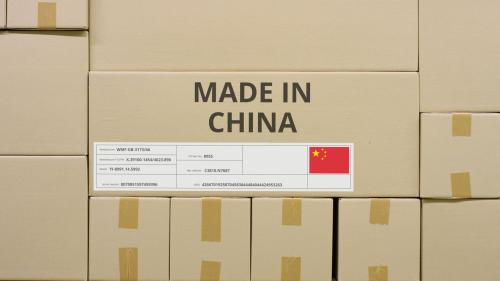Introduction
The 2 percent revaluation of the Chinese exchange rate on July 21, 2005 has generated what appears to be a disproportionate amount of interest around the world. In many ways, this attention has to do with China’s massive build-up of its foreign exchange reserve, its position as the world’s largest destination for foreign direct investment, and as the third largest trading nation.
China’s integration with the global economy has started from a very low base but has been progressing steadily. Capital inflows, in particular, were minimal in the 1970s and 1980s, impeded by capital controls and the reluctance of international investors to undertake investment in a socialist economy with weak institutions and limited exposure to international trade. All of this changed in the early 1990s, when FDI inflows surged dramatically on account of the selective opening of China’s capital account as well as the rapid trade expansion that, in conjunction with China’s large labor pool, created opportunities for foreign investors. These inflows have remained strong ever since, even during the Asian crisis of the late 1990s.
Given China’s status as a global economic power, characterizing the nature and determinants of China’s capital inflows is of considerable interest for analytical reasons as well as for understanding the implications for the regional and global allocation of capital. Our primary objective in this paper is to provide a detailed descriptive analysis of the main aspects of capital inflows into China. Given the degree of interest in China and the relative paucity of data, we aim to provide a benchmark reference tool for other researchers, including by providing some critical perspectives on the numbers that we report.
Section II presents a detailed picture of the evolution of China’s capital flows. China has both large inflows and large outflows in absolute dollar terms. Its inflows have generally been dominated by FDI, which, for an emerging market, constitutes a preferred form of inflows since FDI tends to be stable and associated with other benefits such as transfers of technological and managerial expertise. An interesting aspect of these inflows is that, contrary to some popular perceptions, they come mainly from other advanced Asian countries that have net trade surpluses with China, rather than from the United States and Europe, which constitute China’s main export markets. As for other types of inflows, China has limited its external debt to low levels, and non-FDI private capital inflows have typically been quite limited, until recently. Its outflows are dominated by official reserve assets and unrecorded private sector outflows (or capital flight).
In Section III, we examine the evolution of the balance of payments and dissect the recent surge in the pace of accumulation of international reserves. A key finding is that, while current account surpluses and FDI have remained important contributors to reserve accumulation, the dramatic surge in the pace of reserve accumulation since 2001 is largely attributable to non-FDI capital inflows. We provide some analytical perspectives on the costs and benefits of holding a stock of reserves that now amounts to nearly 40 percent of GDP. There has also been considerable international attention focused recently on the issue of the currency composition of China’s massive stock of international reserves (which is now second only to that of Japan). Despite data constraints, we attempt to shed what little light we can on this issue, both by carefully examining a popular source of data for China’s holding of U.S. securities and by calculating the potential balance of payments implications of reserve valuation effects associated with the depreciation of the U.S. dollar in recent years.
Section IV discusses the broader composition of China’s capital inflows in the context of the burgeoning literature on financial globalization. Notwithstanding the recent surge of non-FDI inflows, FDI remains historically the dominant source of inflows into China. The literature on the benefits and risks of financial globalization suggests that China may have benefited greatly in terms of improving the risk-return trade-offs by having its inflows tilted so much toward FDI.
Whether this composition of inflows is a result of enlightened policies, the structure of institutions, or plain luck is an intriguing question. In Section V, we examine various hypotheses that have been put forward to explain why China has its inflows so heavily tilted toward FDI. In this context, we provide a detailed description of China’s capital account restrictions and how these have evolved over time. While controls on non-FDI inflows as well as tax and other incentives appear to be proximate factors for explaining the FDI-heavy composition of inflows, other factors may also have contributed to this outcome. It is not straightforward to disentangle the quantitative relevance of alternative hypotheses. We argue, nonetheless, that at least a few of the hypotheses—including some mercantilist-type arguments that have been advanced recently—are not consistent with the facts.
The Brookings Institution is committed to quality, independence, and impact.
We are supported by a diverse array of funders. In line with our values and policies, each Brookings publication represents the sole views of its author(s).



